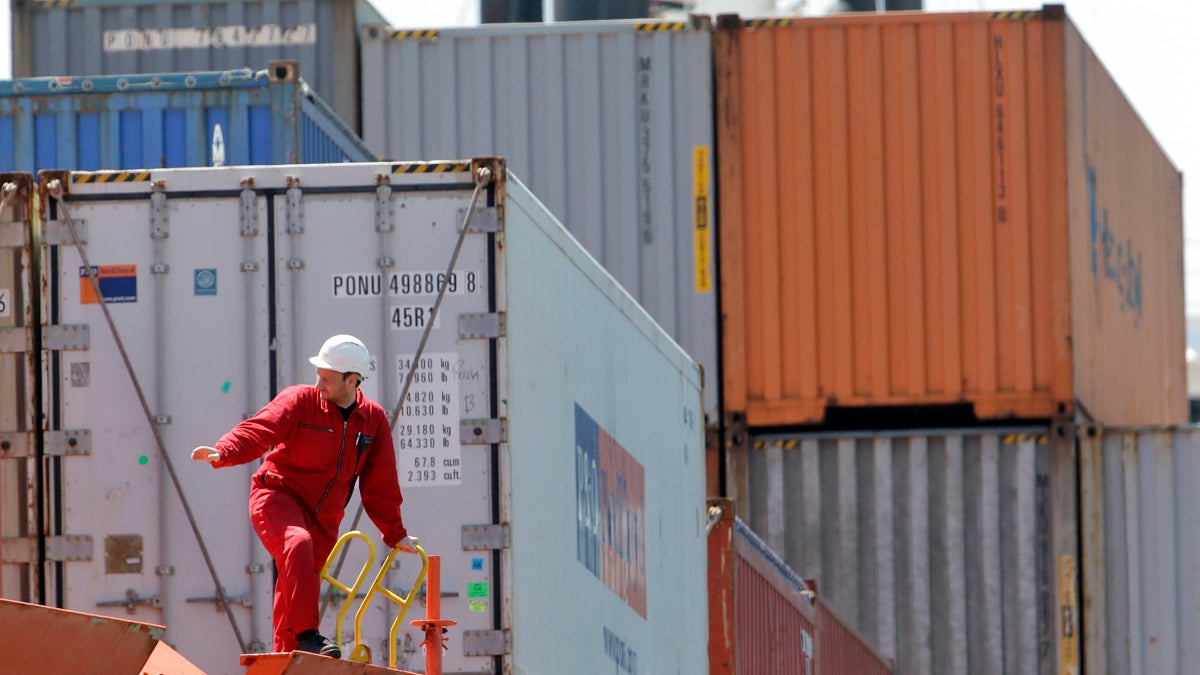Report: Imports and exports concentrated along urban corridors, policy should follow

Cargo containers are docked at Packer Avenue Marine Terminal, in Philadelphia. Pennsylvania sees about 4.9 percent (calculated by value) of all goods pass through its shipping centers. (AP File Photo/Matt Rourke)
Pennsylvania sees about 4.9 percent (calculated by value) of all goods pass through its shipping centers.
New research from the Brookings Institution shows that urban areas drive trading throughout the US. About $20 trillion worth of goods is traded between states and internationally. Pennsylvania sees about 4.9 percent (calculated by value) of those goods pass through its shipping centers.
Here’s the breakdown of the 2010 numbers:
Value of freight trade (imports & exports) in Pennsylvania | Create Infographics
Philadelphia’s largest trading partner, by far, is New York City, with Baltimore and Lancaster trailing. Pittsburgh is less dominated by just one trade partner; its top three are the rest of Pennsylvania (excluding the cities listed above), Chicago, and Cleveland.
The report found that just 100 of the country’s metropolitan areas are the origin or destination of 80 percent of all goods. Not surprisingly, much of the nation’s trade happens between highly concentrated urban corridors, with the New York – Philadelphia corridor one of the single largest in the nation. The closer the hubs, the more they trade.
The report authors say they did the study because little is known about trade networks. “This information gap limits the country’s ability to coordinate freight policies and investments,” the report says. “Overall, the lack of a well-defined, networked approach to freight infrastructure continues to hold back needed projects and hinder long-term economic growth.” Additionally, inefficiencies add cost to end consumers.
Many of the solutions to inefficiencies Brookings offers involve changes to federal policy. For example, switch up the Federal Highway Administration’s formulas, which spread funds “too evenly across the country and without a direction to prioritize highway maintenance.” During the recent gubernatorial campaign, governor elect Tom Wolf spoke of manufacturing, and the ability to export manufactured goods, as a priority for Pennsylvania on a state level, as well. He emphasized the need for infrastructure – roads, rail – capable of supporting efficient import/export networks, pledging to work with other states to make it happen.
WHYY is your source for fact-based, in-depth journalism and information. As a nonprofit organization, we rely on financial support from readers like you. Please give today.


